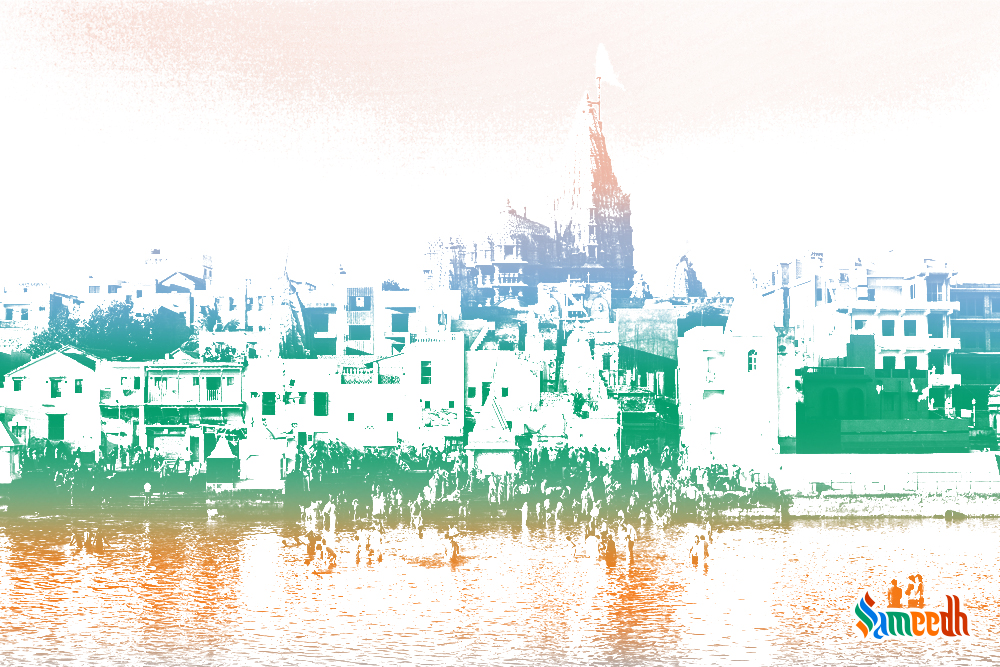Bhagwan Shri Krishna chose Dwarka as His dwelling place after He left Mathura with the entire Yadav clan, to save the citizens of Mathura from repeated attacks of Jarasandh. Dwarka is regarded as one of the Sapt Puri (seven sacred cities) that holds utmost significance amongst t

Where is Dwarka situated?
The beautiful city Dwarka is located on the banks of the River Gomti, alongside the coastline of the state of Gujarat, where River Gomti meets the Arabian Sea. Dwarka, is one of the Sapt Puri (seven holy cities), which holds utmost significance amongst the Hindu devotees. It is also known as the ‘Mokshdham’, where the soul is liberated from the mortal world and becomes one with the ‘Parbrahma’.
Why did Bhagwan Shree Krishna choose Dwarka as His forever abode?
Bhagwan Krishna’s parents were imprisoned by the cruel king Kans hence; Shri Krishna was born in the jail. Kans was infamous for instigating and propagating Adharm (immorality) on the earth. As a result, Bhagwan Shri Krishna took birth to parents Vasudev (Father) and Devki (Mother), with the intent to kill Kans and reinstate the Dharm (righteousness).
Dwarka was the capital of Bhagwan Shri Krishna’s empire, which was established on the coastline of Gujarat. According to history, Bhagwan Krishna left Mathura and decided to travel to the West coast of India in Gujarat, with the entire Yadav clan. Given to a variety of narratives involved with Dwarka, it has become one of the popular pilgrimages. Bhagwan Krishna’s great grandson Vajranabh is said to have built Dwarkadheesh temple in a single night utilising his supernatural abilities. According to folklore, when Bhagwan Krishna was on His deathbed, He had asked the people of His kingdom to vacate the city. Strangely, the original city of Dwarka later submerged under the Sea.
The Architecture and craftsmanship of the Dwarkadheesh temple
Today, the main temple in Dwarka is the Dwarkadheesh Temple, commonly referred as Jagat Mandir. It is a 2500 years old limestone temple that is still in fine condition. It showcases the rich craftsmanship of sculptures developed by several empires that dominated the province. The temple’s main structure is seven stories high and sustained by numerous pillars, making it the main feature of this magnificent temple. Bhagwan Krishna’s idol is so captivating that worshippers who visit this temple, experience the presence of Shri Krishna.
The glory of Dwarka has grown manifolds since centuries
Temple of Bhagwan Shiv, as well as other temples of Bhagwan Ram, Krishna, and Bhagwan Krishna’s friend Sudama, is built on the banks of the river Gomti, where visitors have worshiped for centuries. A boat can be booked and used to traverse the river for a spectacular view of Dwarka. Gomti Ghat is located at the river’s confluence. Bathing in these waters is thought to cleanse the soul. The vibe is enhanced by decorated camels, tea kiosks, and people selling shells, pearls, gemstones, conches, jewelleries etc.
The Archaeological Survey of India has conducted studies at Dwarka, both on surface and offshore in the Arabian Sea. Many antiquities were discovered during a survey in 1963. Sunken villages, a massive stone-built pier, and triangular stone anchors with three holes were found during excavations at two sites on the coastline of Dwarka. The city of Dwarka prospered as a port during 230 CE to 1,200 CE, according to the typological categorization of the anchors. The collapse of what was once a historic harbour was most likely caused by coastal flash floods.
Dwarka’s historical significance for Shree Krishna devotees
The discovery of Dwarka is a huge landmark in the historic significance of our vedic history. It has resolved researchers’ suspicions concerning the historical accuracy of the Mahabharat and the reality of the city Dwarka. It has served to act as an intermediary in Indian history by establishing the persistence of Indian civilization from the Vedic period to the present day. The discovery has also offered insight on the early middle age civilization, the revival of dharm, the return of seaborne trade, the usage of Sanskrit and revised Vedic language.
